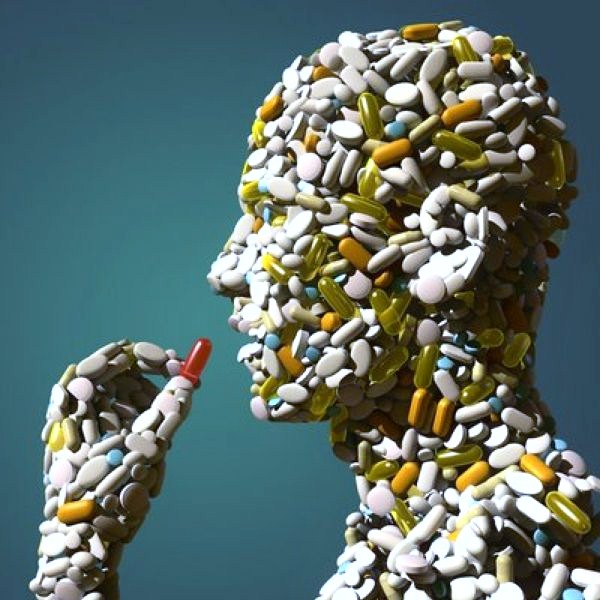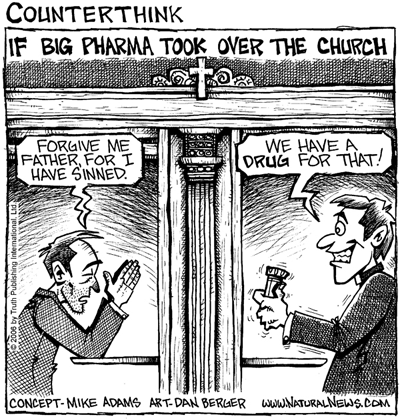Herbert F. Oettgen, MD
 Herbert F. Oettgen, MD | |
Appointments for New Patients
866-675-5864 (866-MSK-LUNG)
Phone
212-639-7505
Education
MD, University of Cologne (Germany)
Residencies
City Hospital and University Hospital (Cologne, Germany); University Hospital (Marburg, Germany)
Fellowships
Memorial Sloan-Kettering Cancer Center
Board Certifications
Internal Medicine (Germany)
Clinical Expertise
Lung Cancer; New Cancer Treatments

Biological agents in cancer therapy: cytokines, monoclonal antibodies and vaccines.
Oettgen HF.
Memorial Sloan-Kettering Cancer Center, New York, NY 10021.
Abstract
Biological approaches to cancer therapy have gone through phases of early excitement and subsequent neglect and ridicule, and have now entered an era of renewed interest. Unlike Coley and his contemporaries a century ago we are using highly purified agents of impressive potency and specificity of action in our current studies. We have come a long way in dissecting their interactions in inflammation, immunity and hematopoiesis, but we have a long way to go in defining optimal conditions for their use in therapy. However one judges the promise biological agents hold for cancer therapy, it seems certain that they will be prominent subjects of future research.
PMID: 1690209 [PubMed - indexed for MEDLINE]

Cancer Cell. 2010 Jul 13;18(1):9-10.
Testimony from the bedside: from Coley's toxins to targeted immunotherapy.
Park JM, Fisher DE.
Department of Dermatology, Massachusetts General Hospital, Harvard Medical School, Cutaneous Biology Research Center, Boston, MA 02114, USA.
Abstract
A new clinical study reported in the New England Journal of Medicine unveils the long-awaited outcome of anti-CTLA-4 therapy for melanoma. It provides grounds for continued enthusiasm for cancer immunotherapy, deepens our thoughts on underlying mechanisms, and suggests exciting next steps.
Expert Opin Investig Drugs. 2007 Sep;16(9):1391-403.

Early experience with novel immunomodulators for cancer treatment.
Thotathil Z, Jameson MB.
Ziad Thotathil
Oncologist at WDHB
New Zealand
- Current
-
- Oncologist at Waikato District Health Board
- Past
-
- Registrar at Kuwait Cancer Center
- Registrar at kidwai memorial institute of oncology
- Education
-
- Royal College of Radiologists
- National Board of Examinations
- Bangalore University
# Thotathil Ziad; Long Jeremy
Erlotinib effective against refractory bronchorrhea from advanced non-small cell lung cancer.
# Thotathil Ziad; Jameson Michael B
Early experience with novel immunomodulators for cancer treatment.
# Thotathil Ziad S; Long Jeremy E; Kennedy Ian; Jameson Michael B; Adams Jacqui; Kuper Marion
Chemotherapy prescription patterns in colon cancer: a patterns-of-care survey in New Zealand.
Waikato Hospital, Department of Oncology, Hamilton, New Zealand.
Abstract
Immunotherapy involves the treatment of cancer by modification of the host-tumour relationship. It is now known that this relationship is quite complex and only some of the interactions have been elucidated. Early attempts at immunotherapy, such as Coley's toxins, were undertaken without an understanding of the processes mediating the effects. With a better understanding of the immunology of this anticancer response, recent trials have focussed on certain aspects of the process to stimulate an antitumour response. In this review, the authors discuss a number of novel biological response modifiers that work as general stimulants of the immune system, through varied mechanisms including induction of stimulatory cytokines (such as IFN-alpha, TNF-alpha and IL-12) and activation of T cells and the antigen-presenting dendritic cells. These compounds include Toll-like receptor agonists, several of which are in clinical trials at present. In addition to immunomodulatory activity, some compounds such as 5,6-dimethylxanthenone-4-acetic acid (DMXAA) and thalidomide and its analogues also target existing or developing tumour vasculature. Some of these compounds have single-agent activity in clinical trials, while others such as DMXAA have shown promise in combination with chemotherapy without increasing toxicity. Lactoferrin is another compound that has shown clinical activity with low toxicity. At present, accepted indications for immunotherapy are limited to a few cancers such as renal cell carcinoma and melanoma. This paper looks at some of the reasons for the limited impact of immunotherapy so far and suggest possible avenues for further research with a greater likelihood of success.

J BUON. 2005 Jul-Sep;10(3):329-36.
The response of urological tumours to immunotherapy.
Gkialas I, Kalantzis A, Lykourinas M.
Department of Urology, General Hospital of Athens "G. Gennimatas", Athens, Greece.
Abstract
The use of immunotherapy to attempt to treat cancer is not new. At the end of the last century, William Coley observed that the tumour of a patient with a sarcoma who developed streptococcal erysipelas regressed. This led Coley to develop a collection of heat-killed bacteria, known as Coley's toxins, which he used to activate the immune system, with some reported tumour regressions. Subsequently, several investigators used BCG to treat solid tumours. When used by intralesional injection, BCG induced regressions of melanoma skin metastases in some patients, but without affecting survival. In 1976, Morales described the use of intravesical BCG to treat superficial transitional cell carcinoma (TCC) of the bladder. The efficacy of intravesical BCG remains the most successful example of cancer immunotherapy to date.

Iowa Orthop J. 2006;26:154-8.
The toxins of William B. Coley and the treatment of bone and soft-tissue sarcomas.
McCarthy EF.
Department of Pathology and Orthopaedic Surgery, The Johns Hopkins Hospital, Baltimore, MD, USA. mccarthy@jhmi.edu
Abstract
In 1891, William B. Coley injected streptococcal organisms into a patient with inoperable cancer. He thought that the infection he produced would have the side effect of shrinking the malignant tumor. He was successful, and this was one of the first examples of immunotherapy. Over the next forty years, as head of the Bone Tumor Service at Memorial Hospital in New York, Coley injected more than 1000 cancer patients with bacteria or bacterial products. These products became known as Coley's Toxins. He and other doctors who used them reported excellent results, especially in bone and soft-tissue sarcomas. Despite his reported good results, Coley's Toxins came under a great deal of criticism because many doctors did not believe his results. This criticism, along with the development of radiation therapy and chemotherapy, caused Coley's Toxins to gradually disappear from use. However, the modern science of immunology has shown that Coley's principles were correct and that some cancers are sensitive to an enhanced immune system. Because research is very active in this field, William B. Coley, a bone sarcoma surgeon, deserves the title "Father of Immunotherapy".
Pharmacol Ther. 1994;64(3):529-64.
Coley's toxins, tumor necrosis factor and cancer research: a historical perspective.
Wiemann B, Starnes CO.
Department of Pharmacology, Amgen, Inc., Thousand Oaks, CA 91320-1789, USA.
Abstract
As far back as the 1700s, it was recorded that certain infectious disease processes could exert a beneficial therapeutic effect upon malignancy. Most prominent among the numerous deliberate efforts made to take advantage of these observations was that of a pioneering New York surgeon, William B. Coley, active career 1891-1936. Using a bacterial vaccine to treat primarily inoperable sarcoma. Coley accomplished a cure rate of better than 10%. This review examines the history of these efforts and presents a discussion of their corresponding relevance to present day immunotherapy.
PMID: 7724661 [PubMed - indexed for MEDLINE]

Nature. 1992 Nov 5;360(6399):23.
Coley's toxins.
Starnes CO.
Comment on:
* Nature. 1992 Aug 20;358(6388):630.
PMID: 1436069 [PubMed - indexed for MEDLINE]
Nature. 1992 Aug 20;358(6388):630.
Coley's vaccine and TNF therapy.
Brouckaert PG, Fiers W, Lejeune FJ.
Comment in:
* Nature. 1992 Nov 5;360(6399):23.
Comment on:
* Nature. 1992 May 7;357(6373):11-2.
PMID: 1495559 [PubMed - indexed for MEDLINE]
Nature. 1992 May 7;357(6373):11-2.
Coley's toxins in perspective.
Starnes CO.
Amgen, Inc., Thousand Oaks, CA 91320-1789.
Comment in:
* Nature. 1992 Aug 20;358(6388):630.
* Nature. 1992 Jun 18;357(6379):545.
Abstract
Despite initial hopes, the efficacy of tumour necrosis factor in treating cancer patients has been disappointing. But a more careful selection of patients, and more appropriate treatment, might be fruitful.
PMID: 1574121 [PubMed - indexed for MEDLINE]
N Engl J Med. 1987 Aug 13;317(7):457.
A. Chekhov, M.D., and Coley's toxins.
Gresser I.
PMID: 3302707 [PubMed - indexed for MEDLINE]

HISTORICAL SKETCH
Coley's toxin revisited: immunotherapy or plasminogen activator therapy of cancer?
L. R. ZACHARSKI and V. P. SUKHATME*
Department of Veterans Affairs Medical Center, White River Junction, VT and the Department of Medicine, Dartmouth Medical School, Lebanon, NH, USA; and *Beth Israel Deaconess Medical Center and the Department of Medicine, Harvard Medical School, Boston, MA, USA
Correspondence to Leo R. Zacharski, Veterans Administration Hospital, White River Junction, Vermont 05009, USA.
Tel.: 802-296-5149; fax: 802-296-6308; e-mail: leo.r.zacharski-at-dartmouth.edu
Copyright 2005 International Society on Thrombosis and Haemostasis
ABSTRACT
No Abstract
Received 11 August 2004, accepted 27 September 2004
J Pediatr. 1975 Dec;87(6 Pt 2):1094-1102.
Nonspecific enhancers of resistance in man.
Florman AL, Holzman RS.
Abstract
Nonspecific enhancers of resistance may include (1) viral interference, (2) interferon, (3) interferon inducers, (4) bacterial interference, (5) bacterial products such as Coley's "toxins," endotoxins, or staphylococcal, BCG, and Corynebacterium parvum vaccines, (6) transfer factor, and (7) well-defined chemicals such as dinitrochlorbenzene, levamisole, and vitamin C. These are discussed only as they have been applied to man to learn whether or not they have enhanced his ability to resist infections and growth of tumors. Preliminary studies suggest that a variety of relatively safe and effective nonspecific enhancers may soon be available for clinical use.
PMID: 1102645 [PubMed - indexed for MEDLINE]
Am Surg. 1969 May;35(5):377-83.
Coley's toxins and chemotherapy in treatment of breast carcinosarcoma: case report.
Chandler JJ, Crisera RV, Fletcher WS.
PMID: 5782243 [PubMed - indexed for MEDLINE]

Cancer. 1968 May;21(5):805-11.
Effect of Coley's toxins and irradiation on the A. melanoma no. 3 tumor in the golden hamster.
Donaldson SS, Cooper RA Jr, Fletcher WS.
PMID: 4870091 [PubMed - indexed for MEDLINE]
Acta Med Scand Suppl. 1953;276:1-103.
A review of the influence of bacterial infection and of bacterial products (Coley's toxins) on malignant tumors in man; a critical analysis of 30 inoperable cases treated by Coley's mixed toxins, in which diagnosis was confirmed by microscopic examination selected for special study.
NAUTS HC, FOWLER GA, BOGATKO FH.
PMID: 13039964 [PubMed - indexed for MEDLINE]
No comments:
Post a Comment